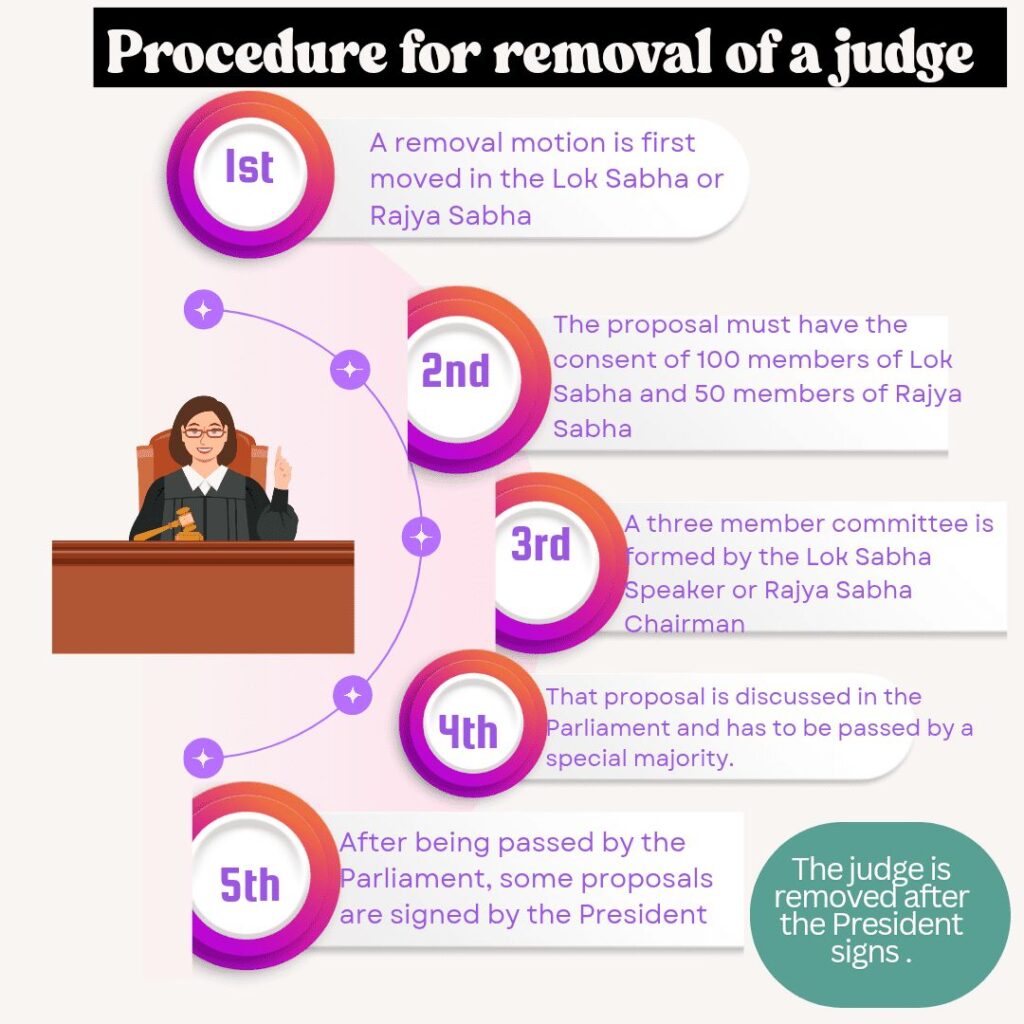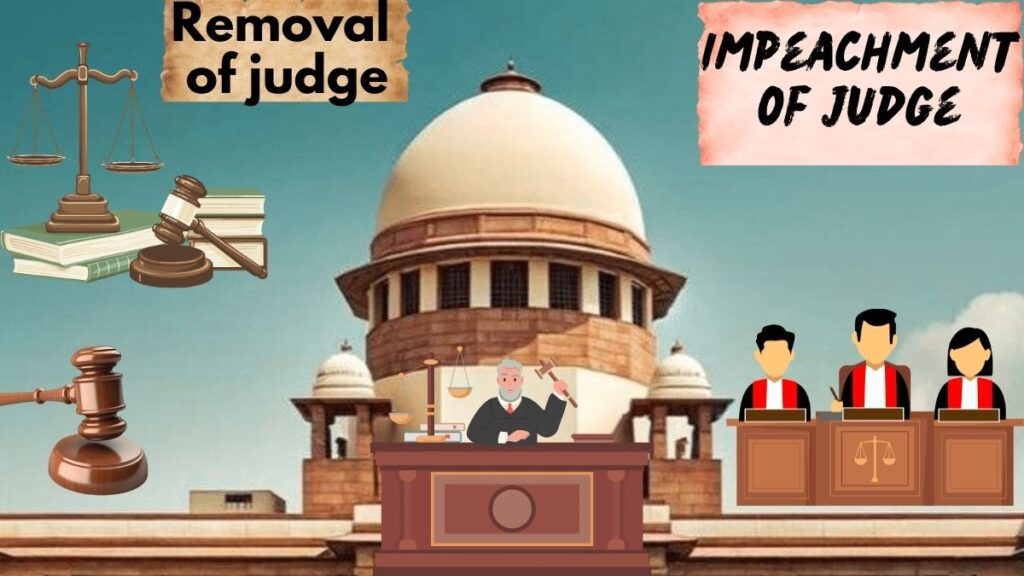Ever since crores of cash was found in the house of Delhi High Court judge Yashwant Verma, the Indian judiciary has been put in the dock of a trust.
According to the current Chief Justice of India BR Gavai, corruption in the judiciary can create a lack of trust in the public towards the Supreme Court.
After crores of rupees in cash were found in Justice Verma’s house, the Supreme Court collegium transferred him to the Allahabad High Court. Justice Verma was asked to resign but he refused to do so.
Former Supreme Court judge Sanjiv Khanna had also appealed to the President and the current government to impeach Justice Yashwant Verma.
Whenever a judge is impeached by the Parliament, all the facilities that the judge gets after retirement are stopped, but if the same judge resigns before the stipulated time, then he gets all the facilities that any other judge gets after retirement.
In today’s article, we will know what procedure is followed to remove a judge of the High Court and Supreme Court of India.
A commission was formed by the central government for the appointment of Supreme Court and High Court judges in India, which is called the National Judicial Appointment Commission, which was a good step towards judiciary but this commission was rejected by the Supreme Court of India.
At present, the appointment of judges of the Supreme Court and High Courts is done according to the collegium system.
Article 124(4) of the Indian Constitution talks about the removal of a Supreme Court judge by impeachment while Article 218 talks about the removal of a High Court judge by impeachment.
The procedure for removing judges of both the High Court and the Supreme Court is the same, only the articles are different in the Indian Constitution.
A judge of the Supreme Court or High Court is removed on the basis of his corruption and incompetence and this procedure is done through impeachment.
According to Article 216 of the Indian Constitution, the number of judges in all the High Courts in India is decided by the President of India, but the number of judges in the Supreme Court of India is decided by the Parliament.
At present, there are a total of 34 judges in the Supreme Court of India, including one Chief Justice and 33 other judges.

What are the procedures for removing a judge?
According to Section 3 of the Judges (Inquiry) Act, 1968, the consent of at least 100 members of the Lok Sabha and at least 50 members of the Rajya Sabha is necessary for the removal of any judge from his tenure.
- To remove a judge, first the members of parliament have to bring a removal motion. If this removal motion is brought in the Lok Sabha, then it must have the signatures of at least 100 members and if this removal motion is brought in the Rajya Sabha, then it must have the signatures of at least 50 Rajya Sabha members.
- After the expulsion motion is signed by a Lok Sabha member or a Rajya Sabha member, it is sent to the Lok Sabha Speaker or the Rajya Sabha Chairman. The Lok Sabha Speaker or the Rajya Sabha Chairman has the authority to either reject or accept the motion.
- This expulsion motion can be introduced in any house. Let us assume that this expulsion motion has been introduced in the Lok Sabha and after being introduced in the Lok Sabha, after being signed by the Lok Sabha member and after submitting it to the Lok Sabha speaker, a three-member committee is formed by the Lok Sabha speaker.
- This three member committee is formed to investigate the charges and allegations made against the judge.
Who is on this committee?
- The Chief Justice of the Supreme Court or any senior judge of the Supreme Court.
- The Chief Justice of a High Court or any senior judge of the High Court.
- Any law eminent person
This committee investigates the charges and allegations made against the judge and prepares its report and sends it back to the House in which the proposal was presented.
After sending the removal motion to the House, it has to be passed by a special majority in both the Houses. Special majority means that it must be passed by more than 50% of the total number of the House and a two-thirds majority of those present and voting.
After being passed by a special majority, the proposal is sent to the President and the day the President signs the removal proposal, the judge is removed before his scheduled time.
The present government is discussing about removing Justice Verma by impeaching him and is also seeking support from other parties and the opposition, but it is important to tell you that till date no judge in India has been removed through impeachment.
An impeachment was brought against Supreme Court judge Veeraswami Ramaswami and the committee also held him guilty but the removal motion could not be passed in the Parliament due to which Veeraswami Ramaswami remained in his position.
Impeachment is a very complicated process in the Indian Constitution. The makers of the Constitution have made this arrangement to maintain the integrity of the Indian judiciary.
How many judges have been impeached so far?
- The impeachment against Veeraswami Ramaswami was the first one in 1993.
- In 2011, Justice Soumitra Sen of the Kolkata High Court resigned following the impeachment motion passed by the Rajya Sabha.
- In 2015, 58 members of Rajya Sabha brought impeachment against Gujarat High Court judge Jamshed Burjor Pardiwala for his objectionable statement on reservation.
- In the same year, 50 Rajya Sabha members had sent a notice against Chief Justice SK Gangele, he was accused of sexually harassing a district judge and the committee also found him guilty but due to lack of sufficient witnesses, the impeachment was not successful.
- In 2017, impeachment was brought against Justice CV Nagarjuna Reddy of Telangana and Andhra Pradesh.
- In 2018, the opposition party talked about bringing impeachment against Supreme Court Chief Justice Deepak Mishra.
- The Rajya Sabha Chairman had also ordered the formation of a committee on the removal motion against the Chief Justice of Sikkim High Court, Paul Daniel Dinakaran, but before that he had resigned.
📰 You May Like This Article
- 🔗 What If Iran Blocks the Strait of Hormuz? Oil Prices, War, and India’s Risk
- 🔗 USA vs Russia Bomber Strength in 2025: Technology, Range & Power Compared
- 🔗 Iran-Israel Conflict Escalates in 2025: What It Means for the Middle East
- 🔗 Israel vs Iran: The 5 Defence Systems Giving Israel the Edge
- 🔗 Who is More Powerful? Iran vs Israel Military Comparison
